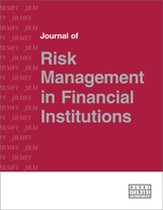Navigating credit valuation adjustment (CVA) under CRR III : A comparative analysis of SA-CVA, BA-CVA and SI-CVA
Abstract
The adoption of Capital Requirements Regulation (CRR) III in 2024 introduced a new regulatory architecture for credit valuation adjustment (CVA), requiring financial institutions to align capital buffers with evolving counterparty credit risk. This paper provides a comparative analysis of the standardised (SA-CVA), basic (BA-CVA) and simplified (SI-CVA) approaches, incorporating detailed numerical examples and explicit mapping to CRR III provisions. By tracing BA-CVA’s theoretical lineage to the Capital Asset Pricing Model (CAPM) and Modern Portfolio Theory (MPT), the study connects supervisory regulation with foundational financial theory. The findings highlight that while SA-CVA offers risk sensitivity and potential capital relief, BA-CVA and SI-CVA serve as accessible but conservative alternatives for less complex institutions. A dual-layered CVA strategy combining Pillar 1 minimums with internal Pillar 2 overlays is recommended to manage residual risks and wrong-way exposures effectively.
The full article is available to subscribers to the journal.
Author's Biography
Daniela Gellenbeck is a doctoral student at Brandenburg University of Technology and a research assistant at Dortmund University of Applied Sciences and Arts. She has over 15 years’ experience in over-the-counter (OTC) derivatives clearing, holding various roles since 2010. She obtained a Bachelor’s degree in economics from Anhalt University of Applied Sciences and a Master’s degree in risk and finance from Dortmund University of Applied Sciences and Arts. Her research focuses on financial risk management and derivatives clearing.
Hermann Schulte-Mattler is a Professor of Business Administration, in particular finance and controlling, and a Senior Professor of Sustainability Risks and Artificial Intelligence at Dortmund University of Applied Sciences and Arts. Previously, he worked for many years in the banking regulation division of the Federal Association of German Banks. Following studies in economics at the University of Duisburg-Essen and Ohio State University and subsequent employment at a major bank, he studied in the PhD finance programme at the Wharton School at the University of Pennsylvania. He is the author of a large number of publications on international harmonisation of banking supervision rules and risk management. Furthermore, he is the co-publisher of a leading commentary on the German Banking Act and implementing regulations.
Citation
Gellenbeck, Daniela and Schulte-Mattler, Hermann (2025, September 1). Navigating credit valuation adjustment (CVA) under CRR III : A comparative analysis of SA-CVA, BA-CVA and SI-CVA. In the Journal of Risk Management in Financial Institutions, Volume 18, Issue 4. https://doi.org/10.69554/JMMO6953.Publications LLP
